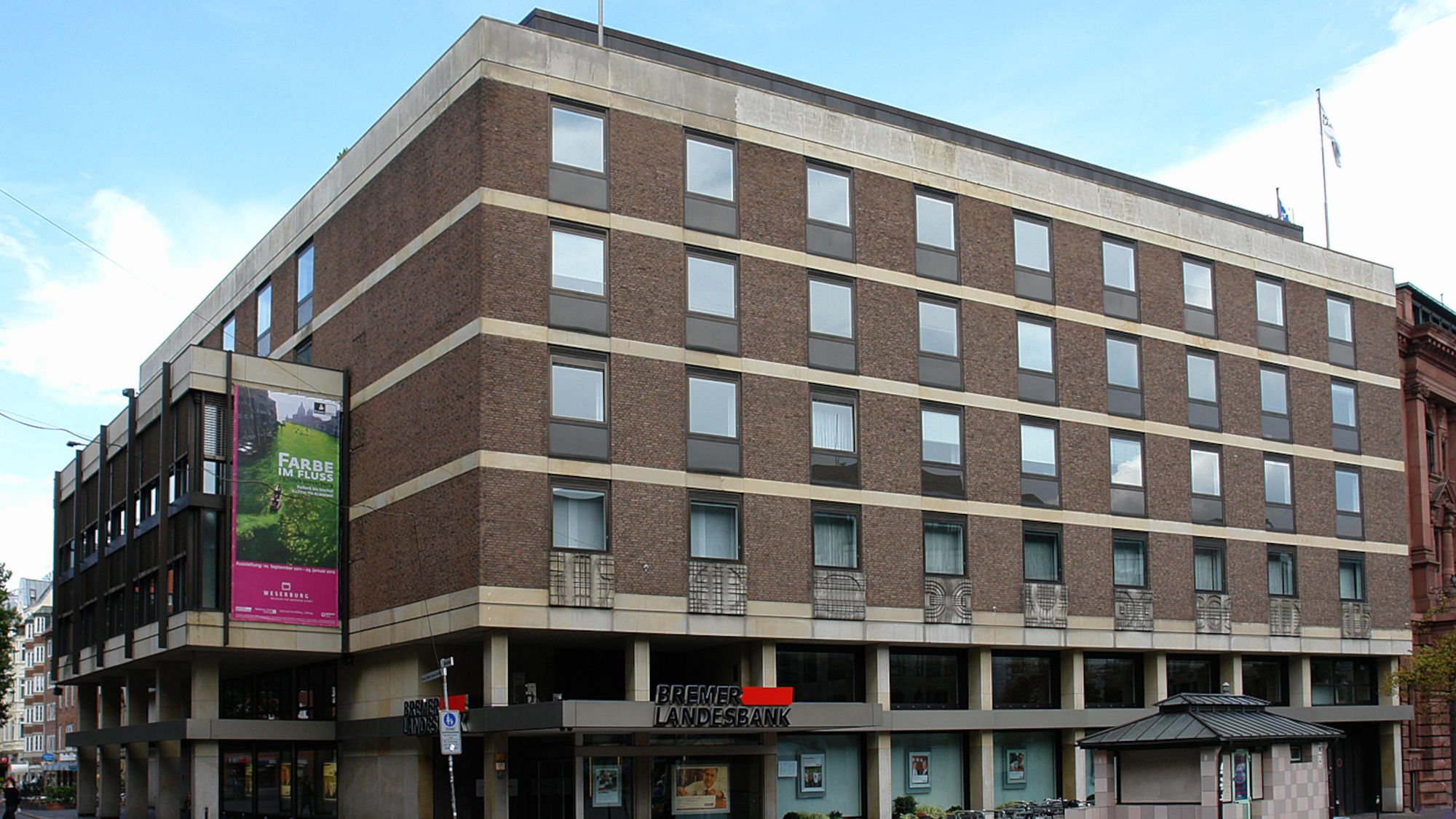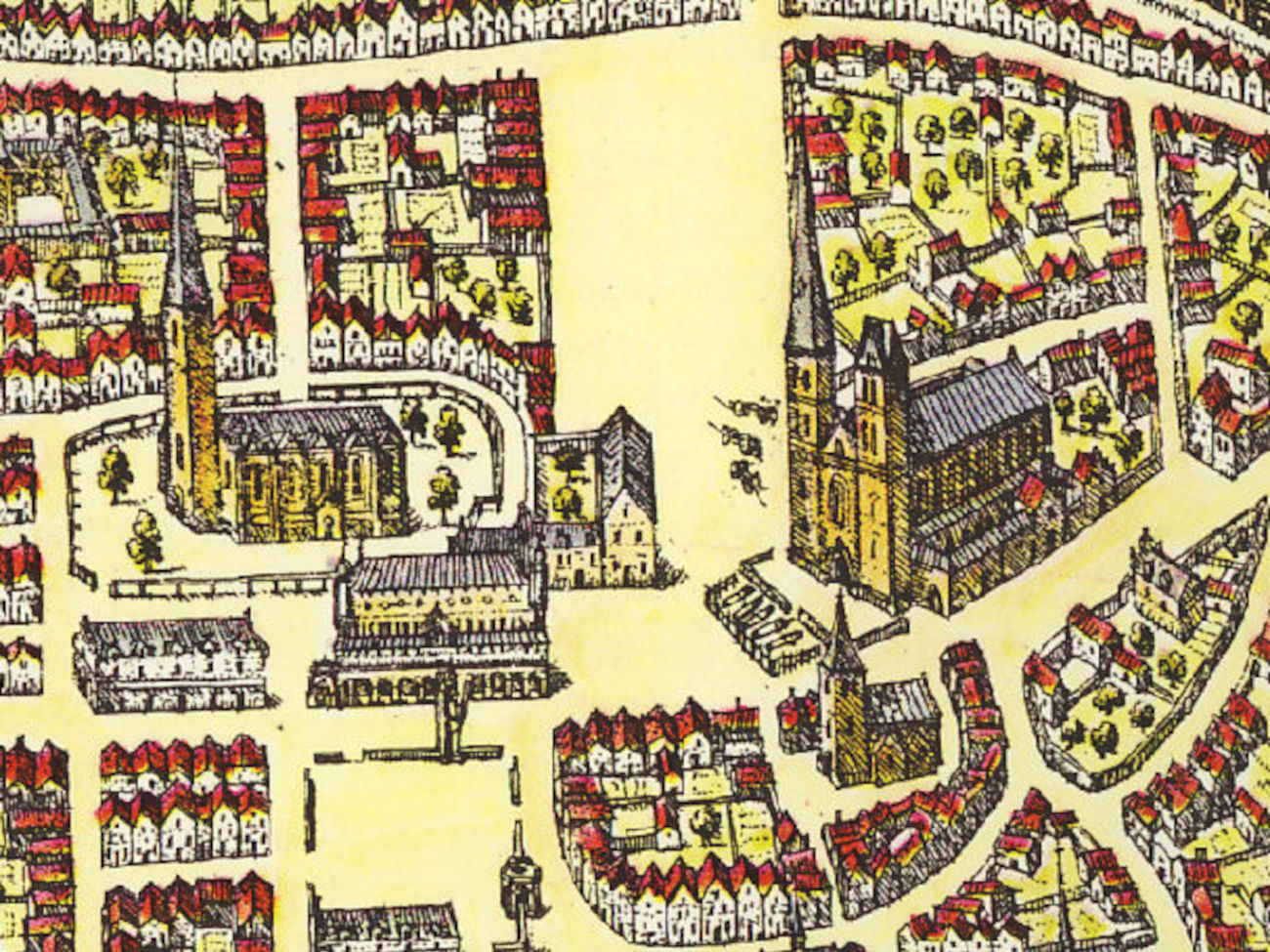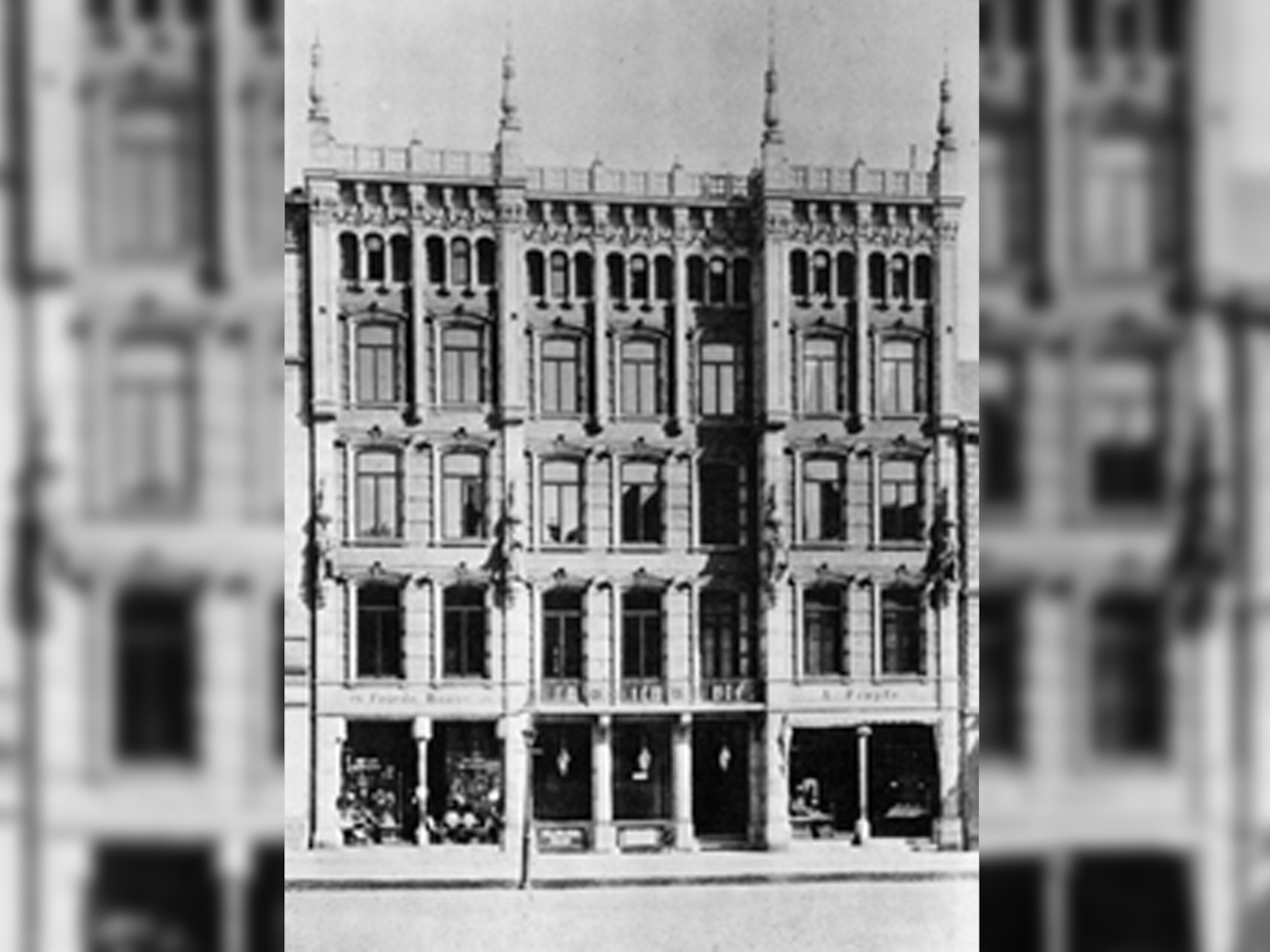
© Jürgen Howaldt
From Church to Banks to Science and Teaching
Bremen’s city center was once dominated by the church and later by banks. In the newest era, the university will enter the scene – the site history of Forum at Domshof
Nothing is more constant than change. These changes affect cities as well, bringing constant adaptations over the centuries. Bremen is evidence of this fact. In the Middle Ages, the seafaring city was shaped by trade and shipping – as well as the church, which at that time had an immense importance and influence on people’s lives.
The cathedral (Dom), built in its current form in the 11th century, and the Liebfrauen church, built in the same century and rebuilt several times since, stood and stand directly at Domshof. The once very large St. Catherine’s Monastery of the Dominicans, however, no longer exists. The monastery and its accompanying buildings, which included a church, were built in the 13th century and were located between today’s Sögestraße and Domshof. These were abandoned in 1528 because the Dominicans did not want to follow the Protestant doctrine after the Reformation.
From the Middle Ages to the 19th Century – an Eventful History at Domshof
As a result, the buildings were used secularly in the following centuries, partly converted into a warehouse, and later demolished for the construction of a new commercial building. Due to the strong presence of the church in this part of the city, the church at that time retained use of the area on which Forum at Domshof stands today. Until the beginning of 1873, it was the site of clergy houses with large gardens. Like in many other major cities, Bremen’s architecture underwent a major makeover in the second half of the 19th century. The wealth and prosperity of the German Empire and the city were expressed in large, representative buildings and town houses. One of the most famous Bremen builders of that time was the architect Lüder Rutenberg. At the beginning of 1873, he purchased the land at Domshof on which the clergy houses stood from the parish “Unser Lieben Frauen.” Shortly afterwards, the master mason’s son, “one of the most important builders of the 19th century” in Bremen, according to the Weser-Kurier newspaper, laid the foundation stone for the building “Rutenhof” at Domshof. This was just one of many prominent buildings that Rutenberg built: His work included the Bremen Kunsthalle as well as many other important buildings, even entire streets in Bremen’s city center.

© Wikimedia
Rutenhof and Banks: A Financial Center for More than a Century
The construction of Rutenhof continued until 1875. With its idiosyncratic architecture, the 21-meter-high four-story brick building was a townhouse par excellence and thus a witness of its time. The following decades saw many conversions as the building ownership changed hands. For example, by the bank Bernhard Loose & Co., which bought the building in 1911. The Rutenhof was directly adjacent to the magnificent Deutsche Bank building, which opened its doors in 1891. The location where Bremer Landesbank and Nord/LB would later stand was already a banking center. In between then and the present day, in 1937, Bremen State took over the Rutenhof. At that time, under the Nazi regime, Bremen belonged to the Gau Weser-Ems. The building survived the Second World War largely undamaged. In 1966, Bremer Landesbank (BLB) became the owner; it decided to demolish the outdated building and opened a modern five-story bank building in 1972. However, this house would not stand as long as its predecessor Rutenhof. Just a little more than four decades later, the building was demolished again. The BLB – which bore the official name “Bremer Landesbank Kreditanstalt Oldenburg” in reference to the participation sealed by state contract of Nord/LB in Lower Saxony starting in 1983 – opened the current seven-story modern glass and concrete building in 2016.

© Wikimedia
Economic Crises and New Opportunities
This was the beginning of the site’s final act as a banking location. The severe economic crisis was followed by a crisis in container shipping. BLB had granted many loans to this industry, which were no longer being paid, and put Bremer Landesbank in a difficult position. The succinct version of a long and turbulent economic history is that on January 1, 2017, Nord/LB acquired Bremer Landesbank and the shares of the minority owner Sparkassenverband Niedersachsen. The building was branded with the Nord/LB logo, but no longer had any lasting success as a banking center. The additional impact of the coronavirus crisis led the bank, with its headquarters in Hanover, to abandon the Domshof site completely by the end of 2023. All business activities in Bremen and the northwest region would then be carried out from the Oldenburg location.
Bank Employees Exit and University Employees Enter the Building
The recent history of the site shows that even adverse events can lead to good things. The building bank employees left behind will soon be the workplace for around 160 employees and lecturers of the University of Bremen, as well as and researchers from two institutes and employees of a consulting service. It will be the place where around 1,500 prospective lawyers study. In February 2024, following a longer search for suitable property in the city center, the relocation of the Faculty of Law, the Center for Labor and Politics (zap), the Institute for Labour and Economy (iaw), and the Here Ahead consulting center was officially confirmed. October 2024 will signify the beginning of a new chapter in Bremen’s history, which dates back officially to 782, and that of the city center in particular.
Further Information
Website Forum at Domshof